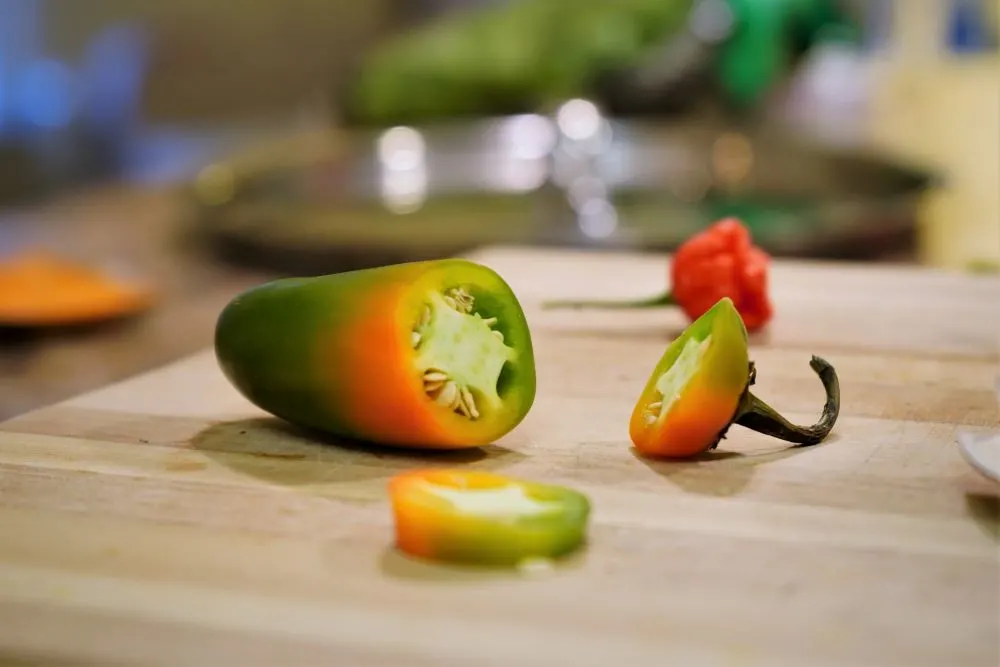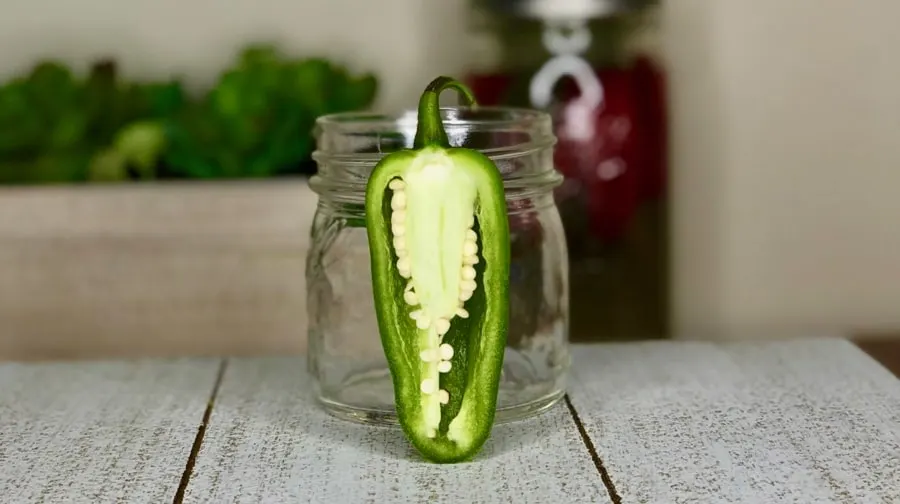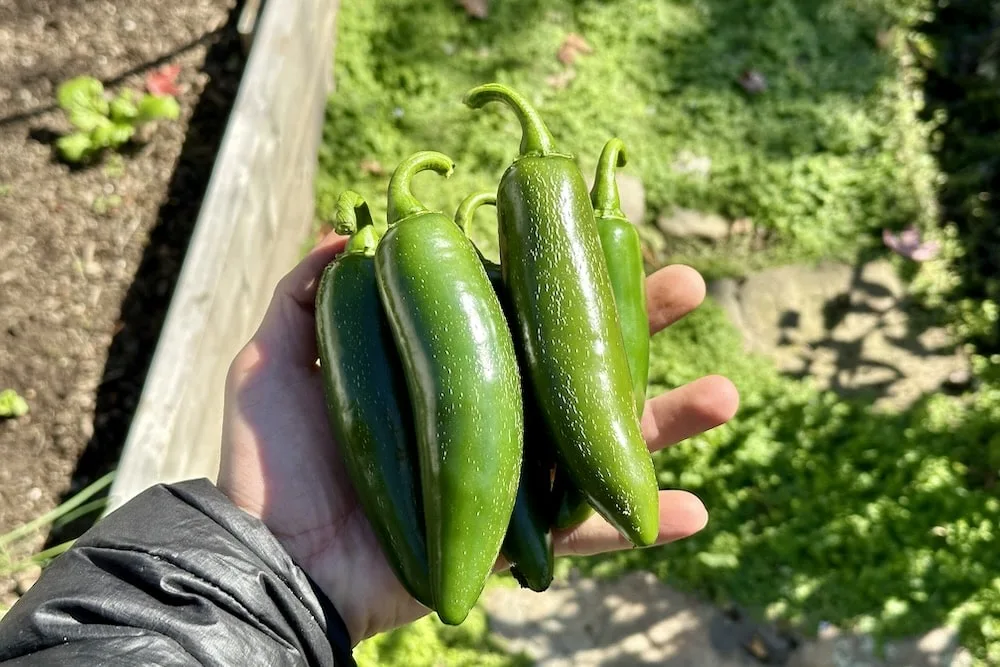Whether you’re deciding at the grocery store, or cooking a pot of spicy soup, you may wonder: How hot are jalapeño peppers?
In this article, you’ll learn how spicy jalapeños typically are, both in terms of the Scoville scale and compared to other hot peppers. Plus, what makes jalapeños hot, and how can you make them less hot? Let’s get into it!
How Hot Are Jalapeños (Scoville Scale)?
To get right to it, jalapeño peppers are typically between 2,000-8,000 SHUs on the Scoville scale. This ranges widely based on the type of jalapeño, and the growing conditions of the pepper plants.

If you aren’t familiar with the Scoville scale, jalapeños are somewhere between a poblano and a serrano pepper for heat. Jalapeño spiciness is considered “manageable” for most people, though sensitive individuals may find them too hot.
What Makes A Jalapeño Hot?
The compound that causes the “burning” sensation of spicy peppers is called capsaicin. This chemical is found in wild chilies and is thought to be a pest and disease deterrent used by the plants.

To measure how hot a pepper is, we use the Scoville scale. This is a standardized scale that measures how much capsaicin is in spicy peppers. It ranges from 0 to 16,000,000 Scoville Heat Units (pure capsaicin).
Most store bought peppers fall between 0 (bell peppers and other sweet types) to 250,000 (habaneros). The hottest peppers in the world easily surpass 1 million Scovilles, and the limits continue to be pushed with crossbreeding.
How To Make Jalapeños Less Hot
Looking to reduce the heat of your jalapeño peppers? There are a couple of tricks you can use to make jalapeños less hot. Try one of these:
- Remove the pith and seeds. Most of the spice of jalapeño peppers is in the white, spongey material in the center. This is known as the placenta or pith, and it is where the seeds are attached to the fruit. Scrape out all of the innards with a spoon, and your jalapeños will have much less heat.
- Soak them in alcohol. This method works great to remove heat, but may add unwanted flavor. Slice your jalapeños and soak them in a clear alcohol (vodka, tequila, etc.) for 20-30 minutes. Strain off the alcohol, and the remaining peppers will be reduced in spiciness.
- Add sweetness. If you’re cooking a meal, adding some sugar, fruit, honey, or other sweetener can help reduce the sensation of heat. You can add a pinch of sugar to your salsa to take the spice down.
- Substitute with bell pepper. If your recipe calls for 4 jalapeños, try using half jalapeños and half green bell peppers. You’ll get some of the heat, and all of the volume and flavor from the bell peppers.

Other than these methods, you can try growing one of the less-spicy jalapeño varieties such as the TAM jalapeño or the nadapeño.
Why Are Some Jalapeños Not Spicy?
If you’re anything like me, you want your jalapeños to be on the hotter side. So, when you get a heatless jalapeño from the grocery store, you’re disappointed. Why are they not hot?
There are a few main reasons that some jalapeños are not spicy:
- Less-spicy varieties. The grocery store wants to sell to as broad an audience as possible. Many people think that normal jalapeños are too hot. So, many hybrids have been developed to have less heat. Many grocery stores stock these less-spicy hybrid jalapeños to satisfy a wider audience.
- Poor growing conditions. If you grow your own peppers, you may end up with less-spicy peppers than desired. Provide plenty of sun, even watering, and nutrients as needed. Or, try planting extra-spicy jalapeños types such as the jalafuego.

If you grow your own peppers at home, there are a few things you can do grow hotter peppers. These include stressing the plants, planting unique cultivars, and more.
If you need more heat in a pinch, try adding a few serrano peppers. These smaller, green peppers are a bit spicier than jalapeños, which can help satisfy your spice craving.
I hope this article helps you learn about how spicy jalapeños are. While there is quite a range in heat, there is a good reason jalapeño peppers are so popular!

